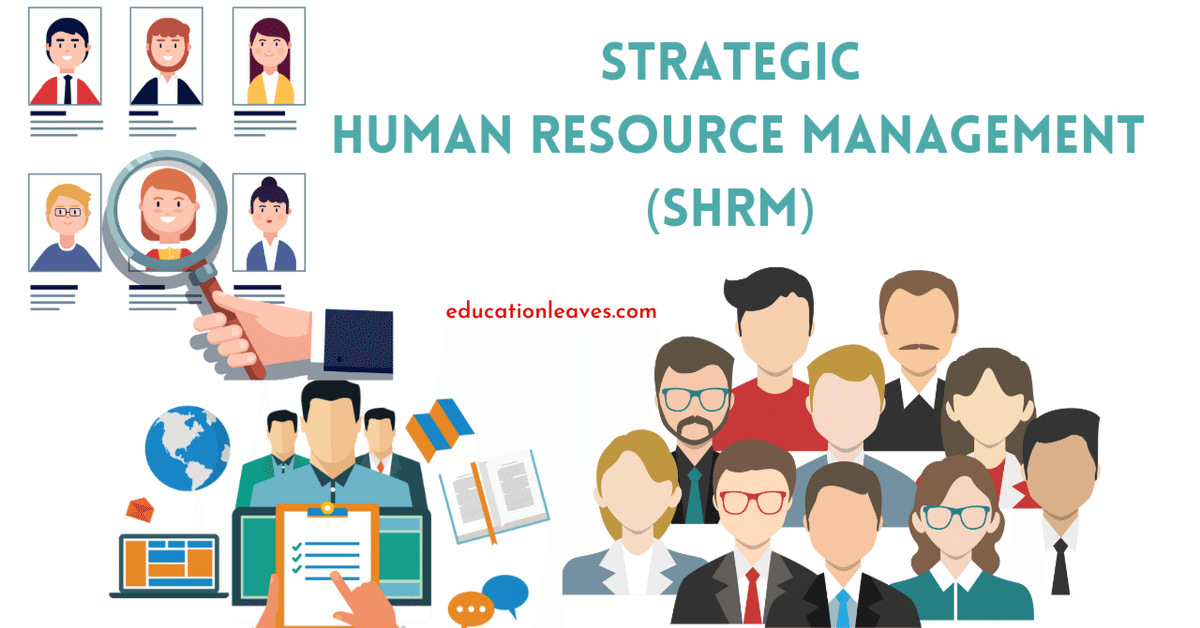
【人事の英語】人事関連の英単語録-「戦略的人事」領域全般-【HR English】
本テーマでは、私がビジネス・スクールのHRMコースで学んだことをベースに、人事領域で使われる英単語をご紹介していきたいと思います。特に本記事では「戦略的人事(Strategic HRM; SHRM)」全般に関する単語・用語についてご紹介します。
単語・用語そのものの説明は省略しておりますので、気になった言葉がありましたらぜひご自身でも調べてみてください!
戦略的人事(Strategic HRM)領域
「戦略的人事」という言葉自体はここ数年、人事領域のホットワードのようになっていますが、人事として戦略的な組織運営を実現するための組織構成のあり方など、本領域に関する単語・用語について改めて英語での表現を確認してみていただければと思います。
Centres of Excellence: センター・オブ・エクセレンス
- Based around the core functional areas of HR practices: Reward, L&D, R&S, Talent Management, Career Management, Engagement, OD etc.
- HR adds value through the development and delivery of high quality and innovative HR (= Emphasises the development of HR practitioners with high skills and knowledge in these functional areas)
- Potential problems of developing knowledge silosHR Shared Services: HR シェアード サービス
- An HR ‘service centre’ or ‘one stop shop’ often focussed on ‘transactional’ HR activities
- Focus on improving quality, consistency and efficiency of service to employees
- Reducing costs by reducing duplication and freeing up time and space
- Tend to be populated by ‘lower skilled/qualified’ HR professionalsHR Business Partners: HR ビジネス・パートナー
- Embedding (senior) HR professionals within the various functions, departments, and/or regions within an organisation
- HR and HR professionals are closer to the core business functions and thus able to make better and quicker decisions
- Enables HR to build knowledge of the business
- A potential for knowledge silos and a failure to see the whole organisational pictureUlrich’s Three-Legged Stool: ウルリッチの三脚椅子モデル
The model of the ideal HR functional structure proposed by Ulrich.
The HR function needs to provide leadership on HR issues connecting the different functional roles of, and actors within, the HR department and communicating effectively at all levels, and with all stakeholders, the HR challenges and solutions facing the organisation
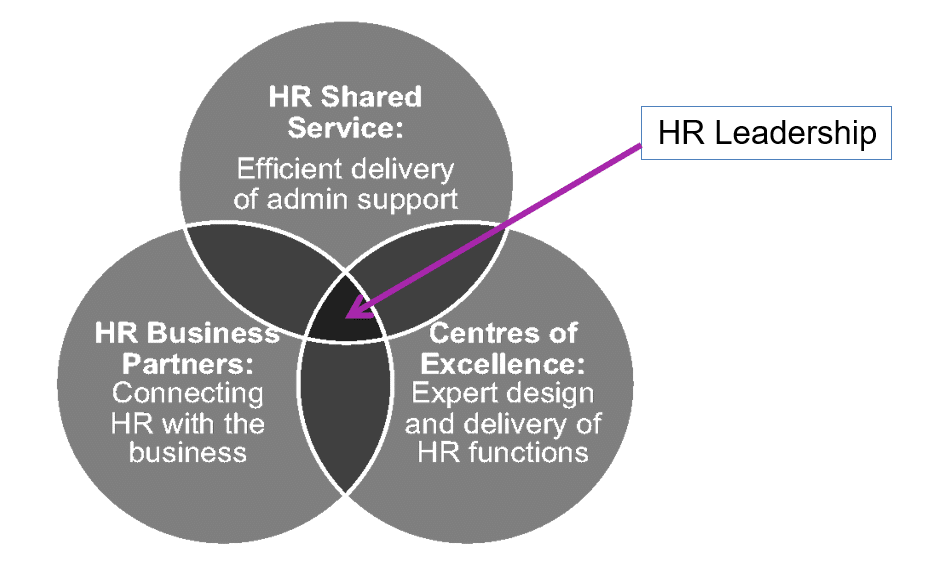
HRM Functional Strategy: HRM機能戦略
4 key components of HR system classified by Jackson et al. (2014):
1. Overarching HRM philosophies: Specify the values that inform an organization’s management approach
2. Formal HR policies: Statements of the organisation’s intent, serving to direct and partially constrain the behaviour of employees and their relationship with the employer
3. Actual HRM practices: The daily enactment of HR philosophies and policies
4. The associated technological and social processes through which HRM philosophies, policies, and practices are established, modified and terminatedThe Psychological Contract Model: 心理的契約モデル
The psychological contract is defined as ‘an individual’s system of belief, shaped by the organisation, regarding terms of an exchange agreement between him or herself and the organisation’
Two different types of psychological contracts:
1. Transactional contracts: Assume a short-term, specific and monetary-related exchange relationship. Competitive wage rates and performance-based pay may be key HR decisions
2. Relational contracts: More concerned with a long-term relationship, characterised by both monetary and non-monetary reward, including issues such as pay, benefits, job security, autonomy, and loyaltyHR best practices and AMO model
HR best practices provide the organisation with a workforce that has the right Abilities, Motivation and Opportunity (AMO) to perform and develop which leads to the high performance of teams/organisation as a wholeWorkforce Intelligence Planning (WIP): ワークフォース・インテリジェンス計画
It is associated with soft HR issues (e.g., employee motivation, attitudes, culture and behaviour) and also emphasises HR planning that is more adaptable and flexible than perhaps more traditional models of manpower planning
- Ensure the organisation has the right employees with the right skills in the right places at the right time
- Ensure the organisation is responsive to changes in its environment
- Provide direction and coherence to all HR activities and systemsReplacement chart (Internal movement chart): 後継(社内異動)チャート
It is used to estimate vacancies in higher level jobs and identify how potential HR supply can fill these vacancies via internal movements from lower level jobs
It provides identification of potential replacements for vacancies within an organisationScenario Planning: シナリオ計画
It simply creates multiple, deliberately divergent stories about the future of employees (HR)
These stories of potential futures emerge from research, understanding and synthesis of the uncertainties facing an organisationOrganisational Change: 組織変革
1. First Order Change: 第一次変革
- Continuous
- Organisational adaptations or variations within an existing system = incremental change
- Examples: variations in products and processes
2. Second Order Change: 第二次変革
- Discontinuous reorientation
- Seek to transform fundamental characteristics and attributes of the organisation = deep change
- Examples: significant strategic reorientation; culture changeExternal Drivers for Change: 変化への外的圧力(外部からの推進)
- Political
- Economic / Market competition
- Social
- Technological
- Environmental
- LegalInternal Drivers for Change: 変化への内的圧力(内部からの推進)
- Technological
- Primary task
- People
- Administrative structuresKurt Lewin’s Force Field Analysis of Change: カート・ルーウィンの変革の力場分析
This model argues that organisations are in a state of equilibrium between forces for change – known as driving forces – and forces against change – known as restraining or hindering forces
*Examples of 'Restraining Forces': Lack of management experience, Perceived cost and risk, Employee resistance
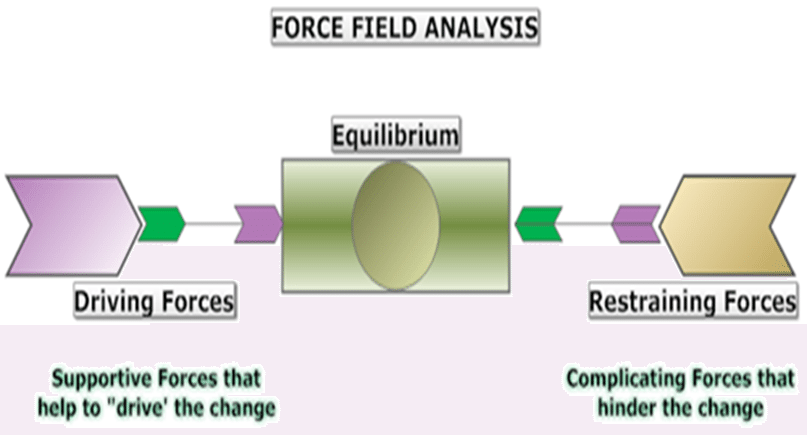
Kurt Lewin’s Three-phase model of Planned Organisational Change (The Unfreeze, Move and Refreeze model): カート・ルーウィンの計画的組織変革の3段階モデル
1. Unfreezing:
- Destabilise the current equilibrium
- Create a motivation and readiness for change
2. Moving
- The change situation is diagnosed
- Change activities are identified and implemented
3. Refreezing
- Sustaining the change and creating stability

Paul Strebel's Proactive and Reactive Responses to Change: ポール・ストレベルの変革への能動的/受動的反応
The choice of any of these paths depends on the answers to a series of questions aimed at identifying the strength of the forces of change and resistance, and whether these forces can be avoided or contained
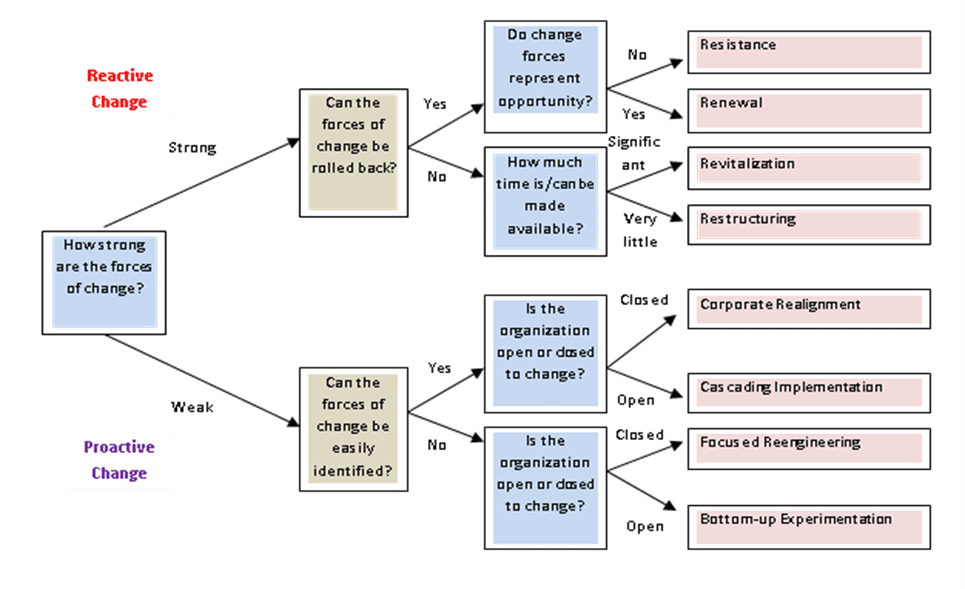
John Kotter’s 8 Steps of Change Model: ジョン・コッターの変革の8段階モデル
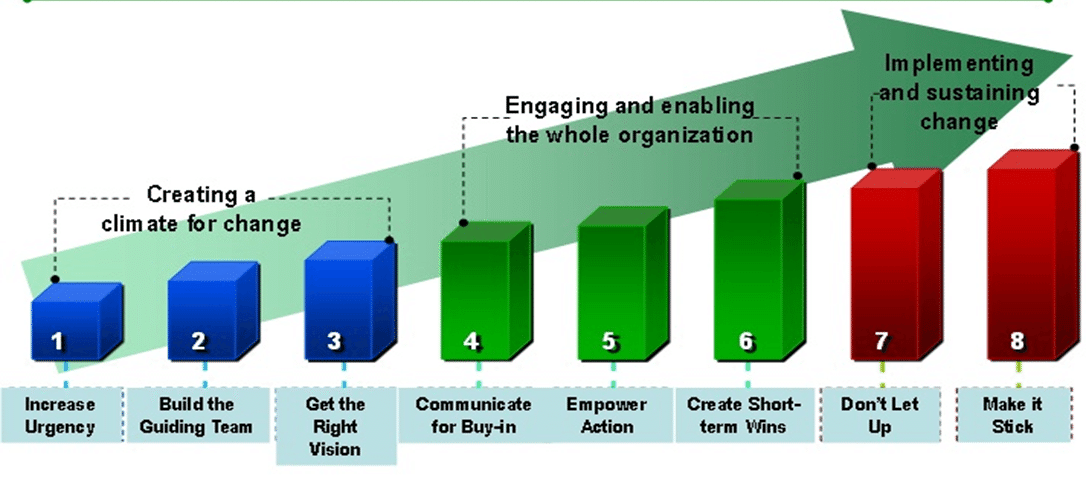
Step 1: First, organisations need to establish a sense of urgency in order to generate awareness of the need for change among its members. This stage aims at dislodging people from their comfort zone and counteracting complacency. It is important that stakeholders not only hear about the reasons for change but consciously understand them through compelling arguments or valid and dramatic evidence from both inside or outside the organisation.
Step 2: Second, a carefully selected and powerful guiding coalition is needed who can actively guide the change and function as a team. The change team members (or guiding coalition) should be committed to the change project themselves and possess the necessary knowledge, skills and capabilities to constantly drive the change throughout the organisation. They have to provide encouragement for the upcoming change and immediately confront – and respond to – negative rumours among organisational members.
Step 3: In the third step, a change vision is needed that focuses the change efforts and inspires organisational members to participate in the change. Such a change vision is developed and shared by all members of the change team and provides direction throughout the change process. It therefore needs to be imaginable, desirable, feasible, focused, flexible and communicable. Good change visions are communicated in less than five minutes and stimulate a reaction that signifies both understanding and interest.
Step 4: In the fourth step, this change vision needs to be communicated clearly. Communicating the change vision needs to address all organisational stakeholders and should be constantly repeated so that organisational members easily recall the desired changes. A good communication strategy is therefore based on simplicity, useful metaphors, multiple information channels, repetition, leadership-by-example and explanations of seeming inconsistencies.
Step 5: In the fifth step, the organisation needs to empower others to act on the vision. This step entails removing obstacles that block the change, changing systems or structures that undermine the change vision and encouraging risk taking and non-traditional ideas, activities and actions. Failure to do so risks creating frustrated organisational members who refuse to participate further in the desired change process.
Step 6: The sixth step is to ensure that organisational members realise the progress of the implemented changes. Positive, visible short-term results will stimulate enthusiasm and motivation to further support the ongoing change process. Consequently, change processes need to plan for visible performance improvements as well as to recognise and reward employees involved in the improvements.
Step 7: The seventh step is to foster determination and persistence in encouraging ongoing commitment to the change progress – in other words, to consolidate change. Organisational change takes time as organisational members need to be trained and to adapt. Thus, the change process needs to continuously reinforce the desired changes and provide a supportive organisational context.
Step 8: The eighth step involves articulating the connections between the new behaviours and overall corporate success – in other words, institutionalising change. Furthermore, leadership development and succession ensure that the organisation institutionalises the new approaches. In this way, the implemented changes become visible and get anchored in the organisational culture, which then avoids falling back on old routines and habits.
Kotter’s main intention behind his change model was to highlight critical elements within a change process. In this sense, Kotter’s eight steps to transform an organisation should be understood as an iterative approach rather than a linear progression through a change process. Given the distinct complexity and dynamics of each change situation, there will always be some overlap between distinct stages.
Caldwell’s HR Change Agent Roles: コールドウェルのHRの変革仲介役割
- Champion: HR leads transformative change in organisations. High influence and power within the company. HR provides a vision.
- Adapter: HR provides a vision, but perhaps focuses on more incremental change.
- Synergist: HR provides expertise to support transformative change. Helping to bring parties together
- Consultant: A more passive role, providing advice (when requested) about the people-related requirements and consequences of change.
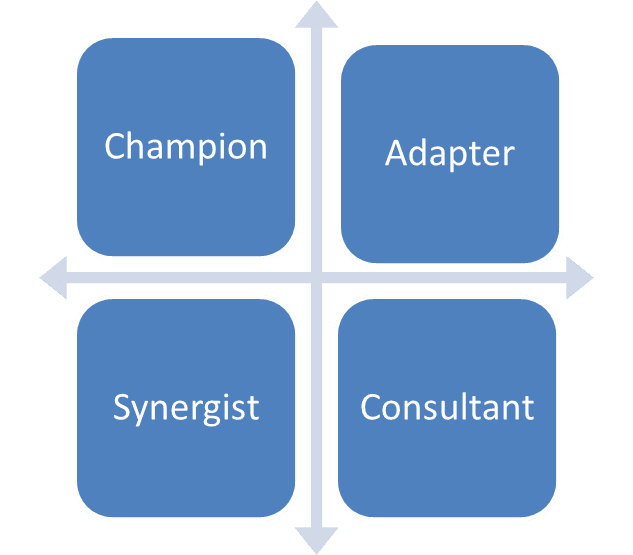
Learning Organisation: 学習する組織
A learning organisation provides a stimulating climate to its members in which they continually strive for new approaches to the acquisition of knowledgeNormative Ethical Theory: 規範的倫理セオリー
- Consequentialism(結果(帰結)主義)
It suggests that moral worth is assessed by the consequences of a decision or course of action - ethical pragmatism. Acts are morally right if they produce some desired result like teleology. Within this body of thought, two perspectives are considered.
1. Egoism: Defines right as those that maximize self interest or utility Enlightened Egoists (enlightened self interest)
2. Utilitarianism: Those acts which maximize total utility (greater good)
The pleasure-pain calculation
- Non-Consequentialism(非結果(帰結)主義)
It emphasises the idea of ethical principles and duty. In short, the focus when judging whether or not actions are morally right, is on intentions and principles rather than the outcomes of decisions or actions.
1. Deontology (Kantian ethics): Focuses on individual rights and intentions associated with particular behaviour rather than on consequences. Equally respects all persons - stakeholder perspective.
2. Virtue Ethics: An acquired disposition valued as part of an individual’s character. Conventional morality or that which a mature person with a ‘good moral character’ would deem right.Descriptive Ethical Theory: 記述的倫理セオリー
- Organisational Justice: 組織の正義
Organisational justice research explores employees evaluations of, and reactions to, perceived injustice at work. Also interested in why and when managers/leaders behave (un)fairly or make (un)fair decisions.
1. Distributive Justice: Fairness related to one’s outcomes/results from work - equity, equality, or need
2. Procedural Justice: Fairness of decision making processes: accuracy, transparency, voice, consistency, ethicality, possibility of challenge
3. Interactional Justice: Fairness of the communication processes used - accuracy of information, truthfulness, dignity, respect and courtesyInternational HRM
- Ethnocentric: 本国志向(中心)主義
- Polycentric: 現地志向(中心)主義
- Geocentric: 世界志向(中心)主義
- Regiocentric: 地域志向(中心)主義
最後に
以上、組織内での人事の役割に関するセオリーなど、戦略的人事に関連するテーマからピックアップしてお伝えしました。
興味のある単語などがございましたら、英語の勉強と合わせて、ぜひご自身でも調べてみていただければと思います。
本記事が、今後、グローバル人事のキャリアや海外大学でのHRM専攻など人事分野で英語を使ってグローバルにキャリアを築いていきたいという方々の一助になれば幸いです。
この記事が参加している募集
この記事が気に入ったらサポートをしてみませんか?
